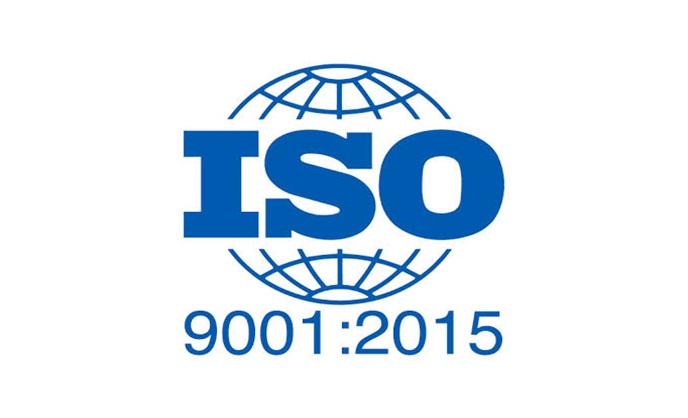Three Things to Understand ISO 9001:2015- Quality Management Systems

The International Organization for Standardization (ISO) has released the ISO 9000 family of specifications, including quality improvement standards. The 9000 series enables organizations to define steps to create and maintain a quality management system (QMS). Within this family, ISO 9001 is the only standard for which organizations can obtain certification. ISO 9001 describes the framework that details what an organization should include in its QMS. According to this standard, organizations must demonstrate their ability to provide products/services that meet and exceeds customer requirements and adhere to the statutory and regulatory protocols.
When companies obtain ISO 9001 certification, it enables them to advertise the fact that external auditors have confirmed that they meet the various requirements of the standard. It allows them to establish that their QMS is aligned with the world-class needs. If individuals get this certification, it implies that they have the requisite knowledge to implement or audit an ISO 9001 QMS. Certifying to ISO 9001 standard enables enterprises to achieve social credibility and increase customers’ trust. It facilitates the stakeholders to continuously improve business performance by eliminating issues like inefficient procedures or repeated mistakes. The goal is to streamline processes across the business, from purchase to manufacturing, shipment, and service. The consistency in rules helps to maximize business profits and boost customer satisfaction.
What’s New in ISO 9001:2015?
ISO 9001 standard was most recently updated in the year 2015. ISO 9001:2015 puts more emphasis on measuring and properly assessing the input and output of processes. It places particular importance on risk-based thinking. The risk analysis helps to uncover the various challenges and overcome them in the management of business processes. It enables the stakeholders to promote a proactive instead of reactive approach. ISO 9001:2015 also puts focus on leadership and management commitment to ensure the effectiveness of the QMS. It also includes clarifications on objectives, measurement, and change present in the 2008 version. The two new clauses, 7.3 “Awareness” and 7.4 “Communication,” put further consideration on these two aspects.
ISO 9001:2015 is based on Annex SL that intends to bring a common structure and language across all standards. Hence, ISO 9001 is now easier to integrate with ISO 14001 and other standards. The new structure consists of the following 11 clauses:
- Clause 0: Introduction
- Clause 1: Scope
- Clause 2: Normative references
- Clause 3: Terms and definitions
- Clause 4: Context of the organization
- Clause 5: Leadership
- Clause 6: Planning
- Clause 7: Support
- Clause 8: Operation
- Clause 9: Performance evaluation
- Clause 10: Improvement
Summary Of Each Section of ISO 9001:2015 Requirements
-
Section 0: Introduction
It provides an introduction to the principles, purpose, and critical concepts of the standard. It also introduces risk-based thinking and the process approach.
-
Section 1: Scope
It identifies the scope for the standard. It specifies the requirements for a QMS of any organization.
-
Section 2: Normative References
It covers various terminology and fundamentals. This and supporting standards constitute the 9000 series.
-
Section 3: Terms and Definitions
Terminologies used across this standard come directly from ISO 9000:2015. It identifies the fundamentals and vocabulary.
-
Section 4: Context of the Organization
When implementing QMS, you need to thoughtfully align your intent and business objectives with the QMS requirements. Identify internal and external issues, needs, and expectations of interested parties, QMS scope, and processes.
-
Section 5: Leadership
It covers leadership responsibility. Those in the management tier need to demonstrate leadership and commitment. They should establish and communicate a quality policy and validate that the duties and authorities are correctly assigned and understood.
-
Section 6: Planning
It covers Organizational QMS planning to address organizational opportunities, risks, charges, and quality objectives.
-
Section 7: Support
It covers the resources required for QMS. It aims to ensure that employees are competent and aware. The section provides documented information to support your QMS.
-
Section 8: Operation
It covers the plan and control processes to meet the various requirements for products and services.
-
Section 9: Performance Evaluation
It demands your organization to monitor, measure, analyze, and evaluate the QMS.
-
Section 10: Improvement
It upholds the principle of continual improvement. Identify scope for improvement, work against nonconformities, implement corrective actions, and continually improve the organizational QMS.
The Principles of ISO 9001
Some of the agreed principles in ISO 9001 standard are:
- Customer Focus: It puts customers at the center of the business.
- Engagement of People: It helps ensure that the employees are engaged and committed to the venture’s success.
- Leadership: Good leaders create a working condition that focuses on holistic performance and quality.
- Process Approach to Quality Management: When viewing a company’s goals and activities through the lens of processes, it helps to envision the big picture. It does not focus on silos but is process-driven to reveal issues and concerns on the path to product delivery.
- Continual Improvement: Organizations need to adopt a continual improvement process to meet and exceed customer expectations.
- Evidence-Based Decision Making: Leveraging data-driven decisions helps to build organizational confidence.
- Relationship Management: Organizations must actively manage relationships with suppliers, vendors, partners, and others for business success.
To Conclude:
Organizations of all types and sizes can benefit from the ISO 9001 standard. It enables them to actively organize processes, improve their efficiency, and continually improve. Obtaining certification in this standard will help create satisfied customers, management, and employees.